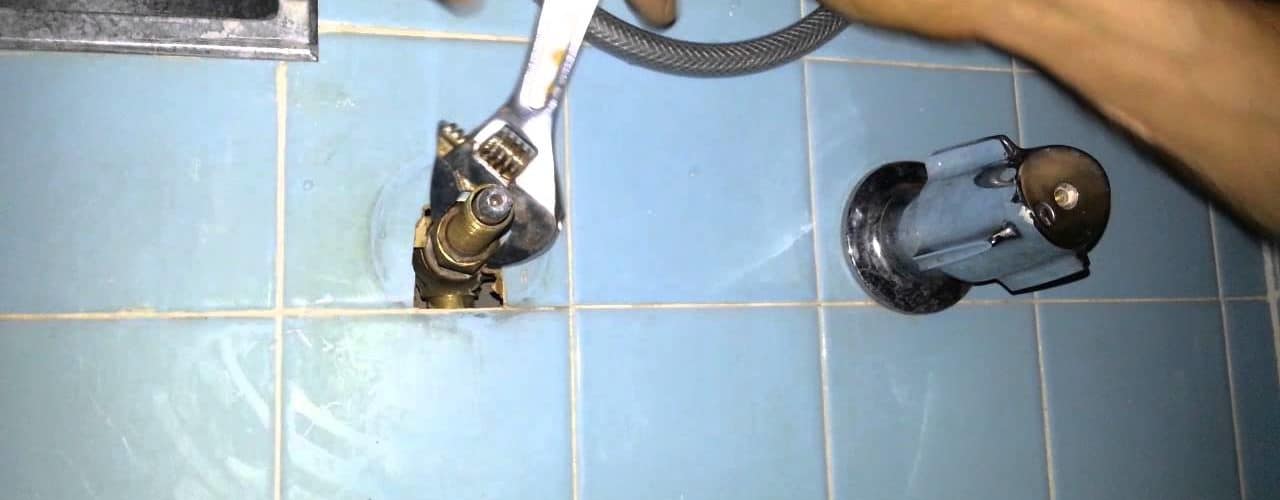There are several things that will cause a shower to leak. If the plumbing connections have gone bad, water will get into the walls, and eventually find its way into a basement or onto the bathroom floor. If the tile grout or caulking is chipping or brittle, water will get into these seams with the same result. In the event the shower pan is cracked or damaged, this may very well be the cause of a leaking shower.
Identifying the source is the first step, and once this has been accomplished, the repairs can be targeted to stop the leak. Excessive water in the wall cavity and under a shower can promote mold growth, as well as dry rot in the wood framing. In this regard, it’s important to take the necessary steps to fix the leak.
Many times, determining the source of a leak is simply a matter of running the water and observing the area around the shower. The rubber seal on a glass shower door can become ineffective over time, and the result will be water on the floor in the area of the shower dam. This can be corrected by replacing the seal, then running the water again to be sure the problem is solved.
If the seal is not leaking, and water begins to appear on the floor, there could be a problem with the caulking around the shower drain. Remove the drain grill, dig out any residual caulking, and re-caulk the hub. Then, replace the grill and allow the caulking to dry overnight. A water test the next day will prove whether this was the problem. If the visual inspection doesn’t lead to an obvious solution, the process of determining the cause of the leak will have to be taken to the next level. This will begin with a close inspection of the caulking around the base of the shower walls, and along the seams of the shower door frame.
Waterproof caulking is not a lifetime product. At first glance the beads might appear to be intact, however, if it has been more than two years since the shower was caulked, there’s a good chance the caulking needs to be replaced. Remove the old caulking with a small chisel, and clean the seams with acetone to ensure that no debris remains. Wipe the seams completely dry with a cloth, and apply the caulking in an even, continuous bead. Allow the caulking to dry overnight before water testing the shower.
Most likely, the problem will be with the shower door seal, the shower drain, or the caulking in corners and around the seams. However, if the leak persists, there is a problem that may require removing the shower pan, and possibly a section of the shower walls as well.
In the event the leak has been ongoing for some time, there will be signs, such as lifting plaster on the walls, lifting and loose floor tile, or soft spots under foot on the floor. These are indications that the shower needs to be removed and replaced. If this is the case, it is best not to use the shower, and consult with a reliable contractor before attempting any extensive repairs.







